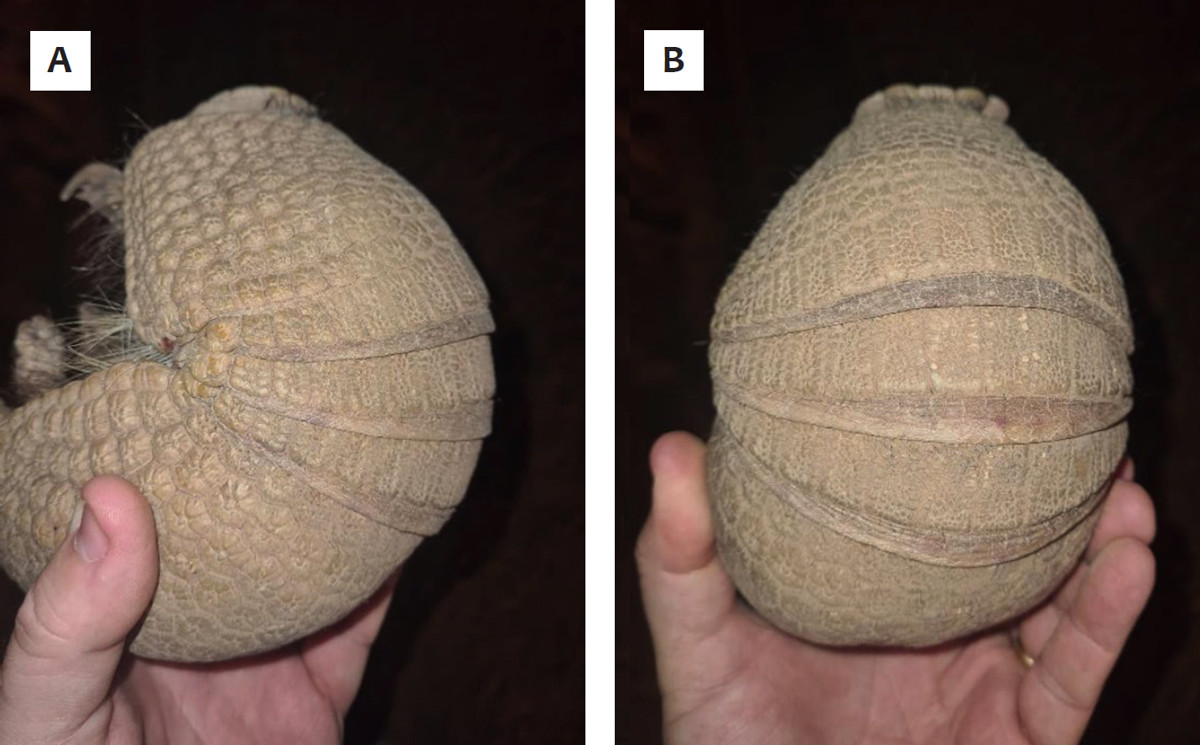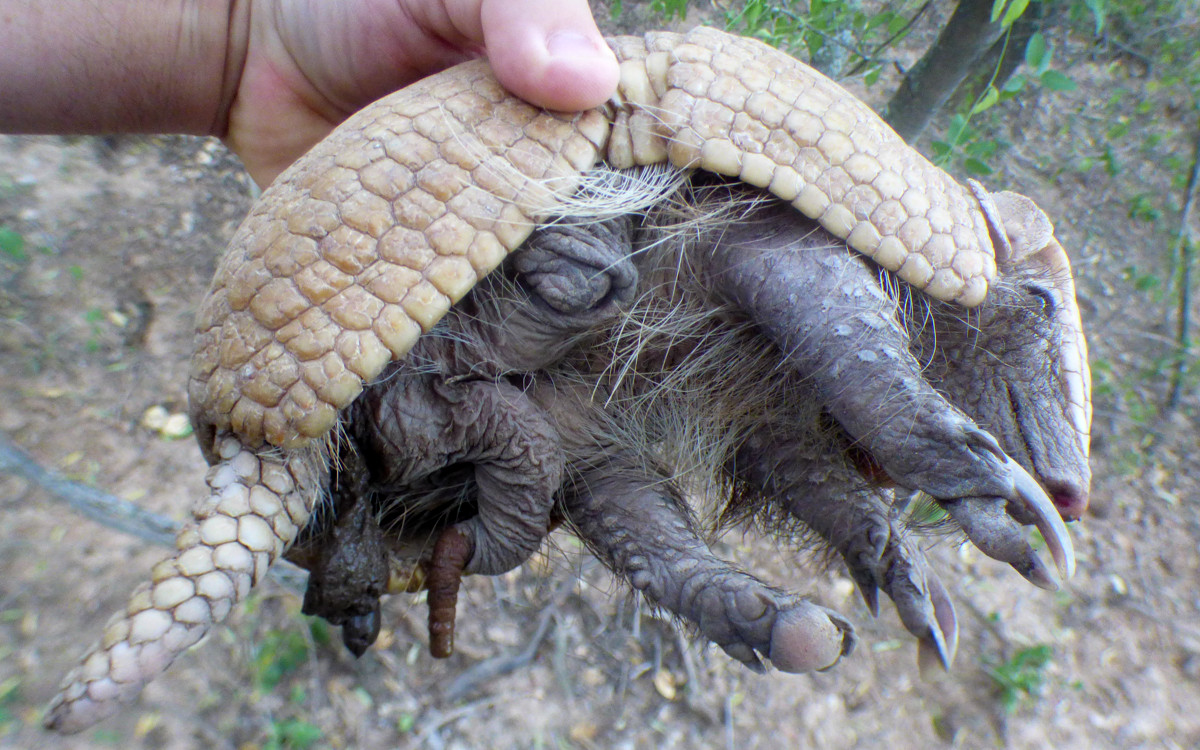Articles with keyword: anomalía de banda
We report on some novel natural history observations of southern three-banded armadillo Tolypeutes matacus and six-banded armadillo Euphractus sexcinctus from Paraguay. These are: 1) a new band anomaly for an adult of T. matacus; 2) inclusion of the newly described subterranean termite Heterotermes lauralinearum Carrijo, 2020 (Rhinotermitidae) and the ant Atta vollenweideri (Forel, 1893) (Formicidae) in the Paraguayan diet of T. matacus; 3) the first reports of parasitism of T. matacus by fleas (Pulex irritans and potential lesion of Tunga perforans) in Paraguay; 4) identification of tracks of T. matacus in the field; and 5) the first documented record for E. sexcinctus in Ñeembucú department.
Informamos sobre algunas observaciones novedosas de historia natural del tatú bolita Tolypeutes matacus y el tatú poju Euphractus sexcinctus de Paraguay. Estas son: 1) una nueva anomalía de banda para un adulto de T. matacus; 2) inclusión de la termita subterránea recientemente descrita Heterotermes lauralinearum Carrijo, 2020 (Rhinotermitidae) y la hormiga Atta vollenweideri (Forel, 1893) (Formicidae) en la dieta paraguaya de T. matacus; 3) los primeros reportes de parasitismo de T. matacus por pulgas (Pulex irritans y lesiones atribuibles a Tunga perforans) en Paraguay; 4) identificación de huellas de T. matacus en campo; y 5) el primer registro documentado de E. sexcinctus en el departamento de Ñeembucú.
Two structural abnormalities are reported in southern three-banded armadillos Tolypeutes matacus (Chlamyphoridae) from Paraguay. Additional reports of individuals with amputated legs are noted, and a potential explanation for the frequency of such occurrences associated with predation and their defensive behavior is hypothesized. This is the first documented report of a band anomaly for adults of this species.
Anomalías estructurales en tatú bolita Tolypeutes matacus (Chlamyphoridae) de Paraguay. Se reportan dos anomalías estructurales en el tatú bolita Tolypeutes matacus (Chlamyphoridae) de Paraguay. Se reportan casos adicionales de individuos con extremidades amputadas y se plantea la hipótesis de una posible explicación para la frecuencia de tales sucesos asociados con la depredación y su comportamiento defensivo. También se documenta el primer reporte de una anomalía de bandas en adultos de esta especie.


